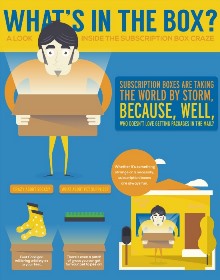— August 11, 2017

777546 / Pixabay
Refund: one of those dreaded words eCommerce store owners don’t want to hear. But when you’re running an online store, customer disputes are, unfortunately, part of the game. And therefore have an intricate part to play in after-sale service, which can either turn a shopper into a one-time spender or a loyal customer.
Recently I did a gift online shop and the store in question’s after-sale service was a disaster from beginning to end. First, the delivery was four days late and it took two days to return an email regarding this issue. When I did get ahold of them eventually, through Twitter, no one in their customer service seemed to know where my order was. When it did eventually come, some things were missing from the order and I then had to request a refund. With the two-day delay in responses, this turned into a frustrating affair and although I got my refund, I will never shop with them online again.
Not because they missed an item; not even because the delivery was late; but because their after-sale service and the way they handled my refund was far too frustrating.
So as an online store, how do you handle refunds in a way that ensures you are not refunding unnecessarily, but also when you are, to do so without losing customers?
The first and most important step in combating refunds or ensuring you can handle them correctly is to have a clear, visible return policy on your site. A good return policy will ensure that you:
- Have notified your customers of your policy before they purchase, and therefore help eliminate excess queries.
- Map out your customer experience and are able to deal with queries as quickly as possible.
- Have outlined the conditions by which a product can be returned, how long after receiving do they have to return a product, and the acceptable reasons by which a product can be returned.
Some examples of awesome eCommerce policies include the likes of Zappos and Nordstrom.

BigCommerce’s return and exchange policy guideline is a good place to start.
The thing to remember is that no matter how extensive and clear your returns policy is, or how good your products are, refunds are part of the eCommerce game. How many times have you returned something from your local H&M or Home Depot because you bought the wrong thing/type/size? The trick here is to be able to manage refunds quickly, efficiently and with as minimal brand damage as possible.
There are two main types of refunds: customer refund requests and forced refunds. In this week’s eCommerce tips guide, we will walk you through how to handle each type.
General Refunds
Marie Forleo, entrepreneur and philanthropist, was asked how she handles refunds and this video sums up all these points perfectly. In the video she highlights these 6 points:
Don’t Take Refunds Personally
As we mentioned in the intro, refunds happen, and taking them personally will only lead you to getting defensive. Getting defensive will hurt your customer service game in a big way and only exaggerate the process. You can help keep things clear by outlining your return policy in full and having very clear lines.
Handle Refunds Quickly Efficiently and Courteously
When you receive a Facebook message, comment or email, thank them for getting in touch and listen to them without getting defensive. Mistakes happen; the best way to handle them is to acknowledge the mistake and do everything you can to help. If your customer is entitled to a refund, return their money with a smile and thank them for giving your products/online store a try. There is nothing worse for a customer than having to deal with a company whose after-sale service is lacking, and the chances of me buying again from a company that drops its service standards as soon as they have my money are very slim.
Here’s an refund response email sample:
Dear [First Name]
We’re so sorry our [product] didn’t meet your expectations. Of course we will process your return or exchange it for another product immediately.
[Instructions for processing exchanges and returns]
To help us improve our product and make customers like you happy in the future, please consider sharing your feedback telling us what specifically was it about the product that you didn’t like?
Forced Refunds
Chargebacks are demands by credit-card providers to online stores to refund changes based on fraudulent or disputed transactions, i.e, when customers force refunds through their banks. There are about 151 different types of chargeback codes. Understanding what these chargeback codes mean is essential in responding accordingly, with relevant evidence to ensure you’re not the subject of unnecessary refunds.
There are 6 main types of chargebacks you can expect to receive. We will look at each of these types and give suggestions on how to respond to each.
Fraudulent Chargebacks
Fraudulent chargebacks include cases of identity theft and so-called “friendly fraud,” where an online shopper will deceptively say a product was never ordered or delivered. If you have a Shopify store you have access to Shopify’s Risk Analysis feature which will help identify a purchase that could be fraudulent before you have fulfilled the order, by flagging the order. For WooCommerce, you have access to apps like WooCommerce Anti-Fraud App. For the ones that do get through, here is the info you should submit with your response to the relevant card company.
- A copy of the purchase invoice
- Proof of any past transactions which were not disputed
- Proof of delivery date and time and address
- The IP, email and physical address of the purchaser
Unrecognized Chargebacks
This is when a card holder looks at their statement and puts a claim in that a charge on their statement isn’t recognizable. The codes for these chargebacks per card company are as follows:
- Visa: Reason Code 72
- MasterCard: Reason Code 4837
- Discovery: Reason Code UA38
These are not as common, but when they do occur, treat them as you would a fraudulent chargeback by attaching the following with your response:
- The purchase invoice
- Copy of the proof of delivery
- IP, email and physical address of purchaser
Subscription Billing Chargebacks
If you have an online store that offers product descriptions such as monthly gift crates, there is a chance you could get a subscription billing chargeback. This is where customers dispute recurring payments after a subscription has been canceled. The codes for these chargebacks per card company are as follows:
- Visa: Reason Code 41
- MasterCard: Reason Code 4841
- Discovery: Reason Code 4541
- American Express: Reason Code 4544
If a customer didn’t cancel or if canceling a subscription is not inline with the agreed terms and conditions, here what you need to include in your response:
- A screenshot of the customer viewing cancellation policy at the time of signing up for the subscription
- A copy of said cancellation policy
- Proof that the customer used products after the date of claim for cancellation. This could be proof of delivery received by customer.
- Proof that a notification for renewal was sent to a customer and was not responded to
Product Not Received Chargebacks
These chargebacks are when customers report to a card company that ordered products were not delivered. Online stores that don’t have good shipping and fulfillment procedures and policies in place are susceptible to this. Card company chargeback codes for this type are as follows:
- Visa: Reason Code 30
- MasterCard: Reason Code 4855
- Discovery: Reason Code 4755
- American Express: Reason Code 155
If you have received this type of chargeback return, but did indeed deliver the product, here is what you will need to supply when disputing:
- Shipping information: name and address
- Tracking number of order
- Shipping service used
- Proof that delivery address matches the address supplied for delivery
Product Unacceptable Chargebacks
If a customer is not satisfied with your product and has exhausted efforts to get a general return, they would report to the card company that products were defective. The codes for this type of chargebacks are:
- Visa: Reason Code 53
- MasterCard: Reason Code 4853
- Discovery: Reason Code 4553
- American Express: Reason Code C31
In many cases, a customer will claim the product was not how it was described on your online store. To prove the invalidity of this, you will need to respond including the following evidence:
- Product descriptions and screenshots that prove the products match what your store shows
- A full description of your side of events
- Proof that the purchaser did not try to return the product they are requesting the refund for
- Shipping information: name, address and tracking number
Final Thoughts
According to 2016 research data from Chargebacks 911, up to 85% of all chargebacks are likely fraudulent, and credit card chargeback fraud is growing by 41% year-over-year. Your biggest defence against this is a good offence. Outline your returns, cancellation and shipping policies upfront. Set up procedures ahead of time, keep records of everything and take the time to dispute these.
Business & Finance Articles on Business 2 Community
(107)






